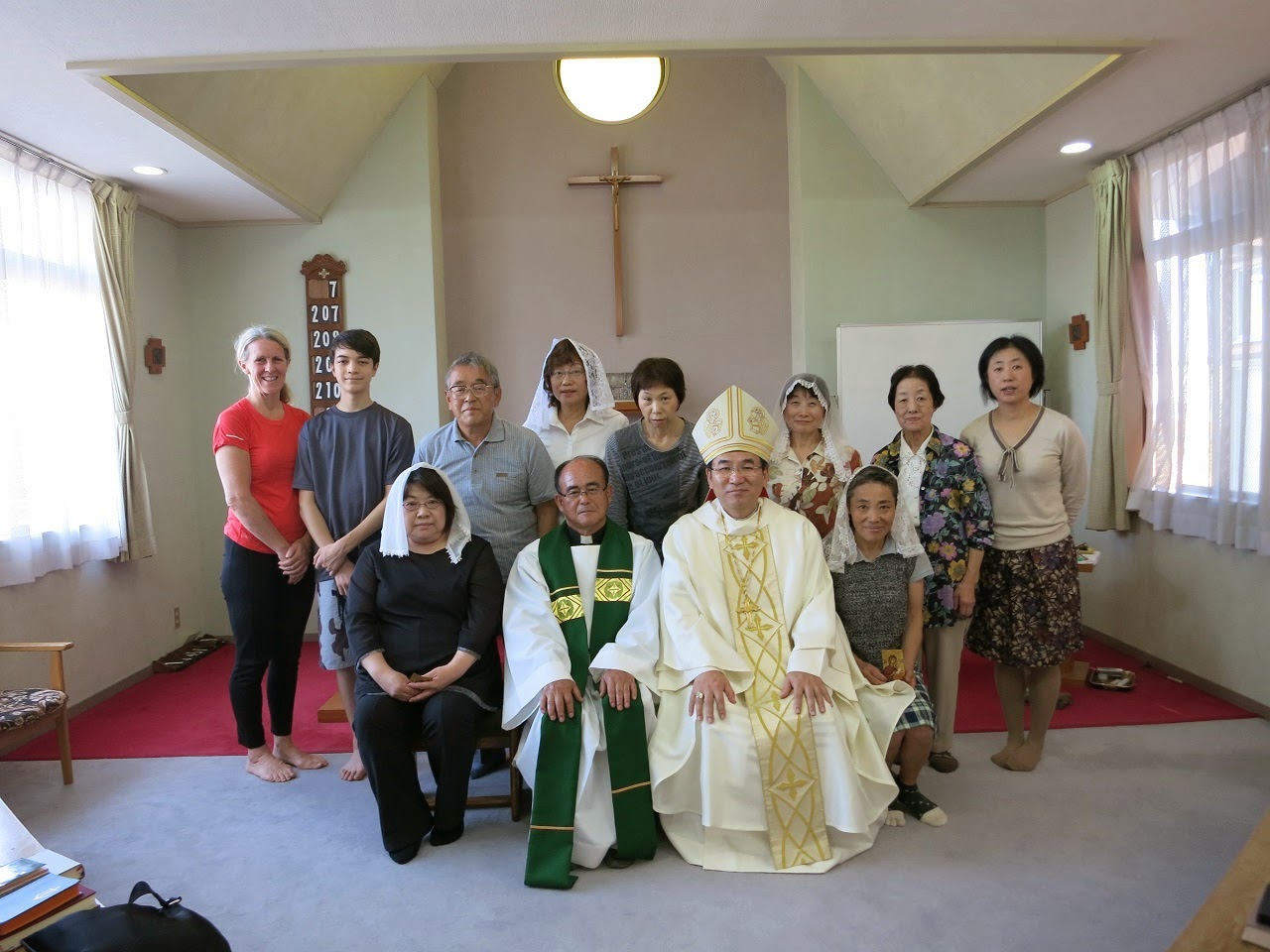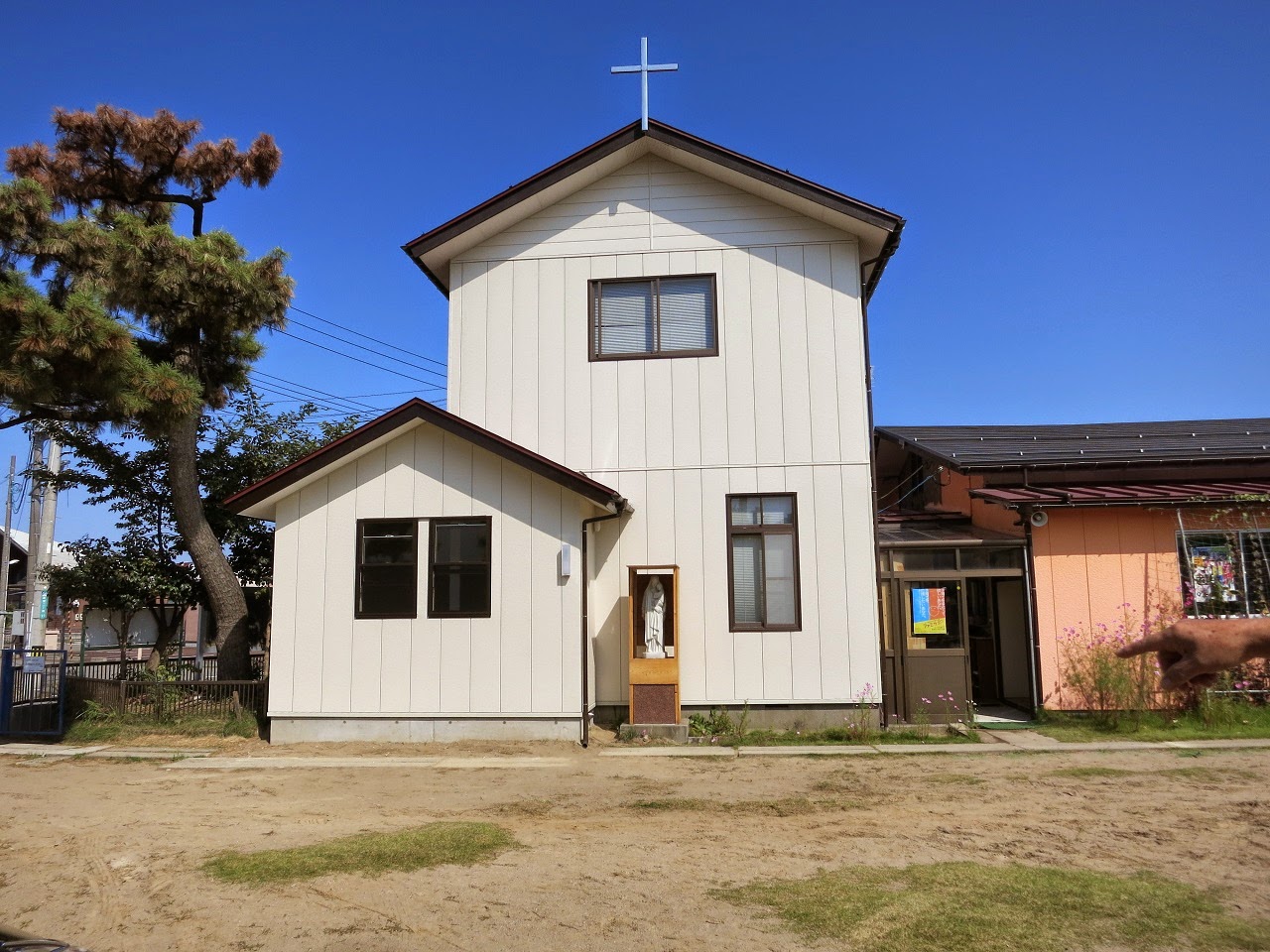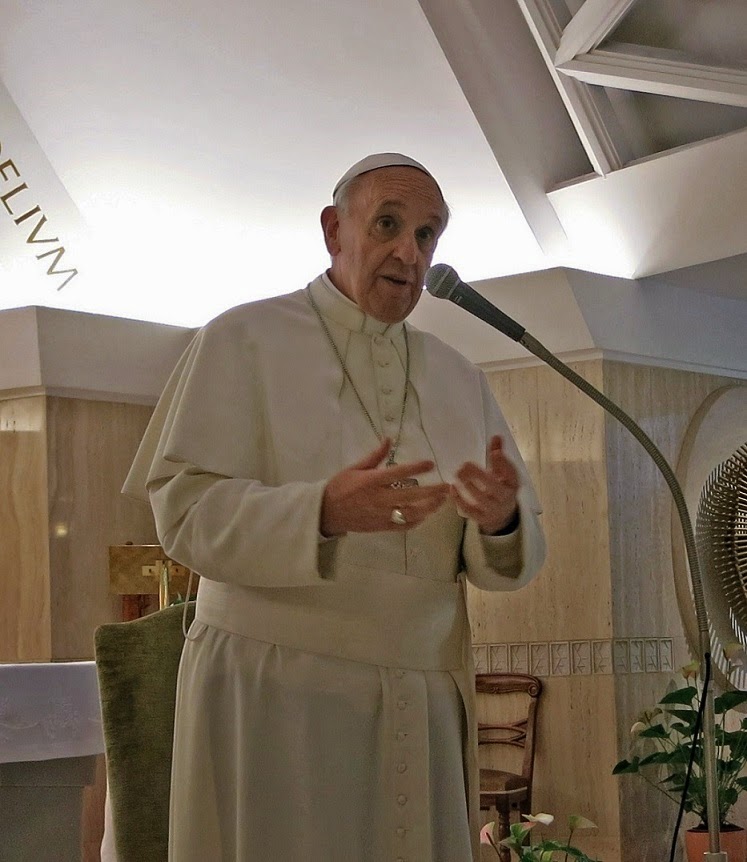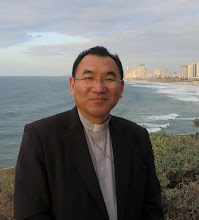On 8 October in Sendai, Ms.Sawako Inae, former program officer of Caritas Japan, professed her first religious vows as a member of the Charity Sisters of Ottawa after two years of novitiate. I presided over the Solemn Eucharist in Higashi Sendai Catholic Church as her former Boss.
Sr.Sawako used to work for UNDP before she joined Caritas Japan. She was one of the most efficient program officers we had in Caritas Japan. On 15 March, 2011, a few days after the massive earthquake and tsunami in Sendai diocese, I traveled to Sendai with others of Caritas Japan including Sr.Sawako to assess the situation and discuss rescue and rehabilitation plan with local bishop. From that day, Sr.Sawako together with Fr. Daisuke Narui, SVD, who was a secretary of Caritas Japan Committee to remain in Sendai to organise the center of emergency response of Catholic Church which later called the Sendai Support Center. Sr. Sawako was charged to visit local communities of the disaster hit area to find real need of people so that Caritas Japan might be able to execute effective emergency support program. She did marvelous work.
While she was in Sendai, she stayed in a convent of Charity Sisters of Ottawa without any intention to become a religious. Then one day, probably after a year of her stay in Sendai, she contacted me to tell me that she wanted to be a religious. That was one of the biggest surprise in my life. Such an active lady in development field and disaster relief field. Such a strong lady who could withstand any harsh environment in other countries. God has his own plan for us.
To proclaim good news is our unavoidable duty as Christian. And Japanese Catholic Church has been facing challenges in our way of evangelisation through our experiences in the relief activities in Tohoku area.
Pope Benedict XVI wrote in his encyclical "Deus Caritas Est" as follows.
"The Church's deepest nature is expressed in her three-fold responsibility: of proclaiming the word of God (kerygma-martyria), celebrating the sacraments (leitourgia), and exercising the ministry of charity (diakonia). These duties presuppose each other and are inseparable.(25)"Those Catholics who are working in the relief activities as volunteers or Caritas staffs translate these three concepts of nature of the Church into reality everyday. To work among people hit by disaster is indeed witness of gospel value in words and deeds. Every evening at the end of daily activities in Caritas Volunteer bases, everyone, including non-Catholic volunteers, come together to have silent period and sharing. That is in fact experience of liturgy and prayer. Above all, entire activities are act of charity based on our faith. In fact, the deepest nature of the Church exists in the midst of relief activities of Caritas in the Tohoku area. Immersing deep into these realities, I am sure, Sr.Sawako had deep experience of conversion in her faith and decided to dedicate herself entirely to God. God really has his own plan for us.





















































